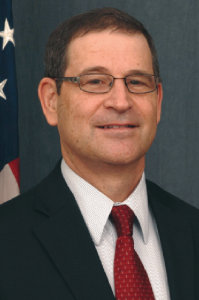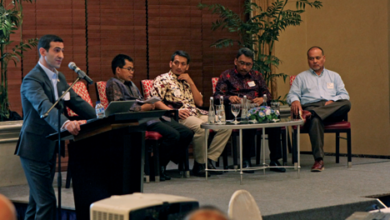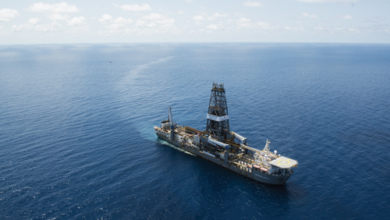Safety culture taking root thanks to SEMS
By Brian Salerno, BSEE Director

Over the past six years, a quiet transformation has occurred with regard to offshore safety and environmental stewardship. The transformation is in the growth of a culture of safety that is sweeping the Outer Continental Shelf.
One of the first major rules published by the US Bureau of Safety and Environmental Enforcement (BSEE) following its formation on the heels of the Macondo incident was the Workplace Safety Rule, more commonly known as the Safety and Environmental Management System (SEMS). This was further refined in a subsequent rule, generally referred to as SEMS II. The underlying purpose of SEMS has been for operators to focus on key elements within their organizations, recognize their strengths and vulnerabilities, and develop procedures to minimize the likelihood of safety and environmental failures.
In many ways, it takes safety management far beyond what is achievable through checklist-style safety verifications because it brings in the human element and focuses on how work is actually accomplished. It has been very gratifying to see how industry has responded to this approach since SEMS was introduced.
The original SEMS rule, which was finalized in 2010, required a set of procedures that had previously been voluntary safety and environmental protection practices for offshore oil and gas operations. SEMS compelled operators to follow API’s Recommended Practice 75 (RP 75). On 14 September 2011, the SEMS II rule was published. It expanded, revised and added several new requirements to the original SEMS rule.
SEMS II mandated that industry operators:
• Develop and implement a stop work authority that creates procedures and authorizes any and all offshore industry personnel who witness an imminent risk or dangerous activity to stop work.
• Develop and implement an ultimate work authority that requires offshore industry operators to clearly define who has the ultimate work authority on a facility for operational safety and decision-making at any given time.
• Require an employee participation plan that provides an environment that promotes participation by offshore industry employees, as well as their management, to eliminate or mitigate safety hazards.
• Establish guidelines for reporting unsafe working conditions that enable offshore industry personnel to report possible violations of safety, environmental regulations requirements and threats of danger directly to BSEE.
• Establish additional requirements for conducting a job safety analysis.
• Require that the team lead for an audit be independent and represent an accredited audit service provider
In working with individual companies and with industry organizations, such as IADC and the Center for Offshore Safety (COS), our Bureau has seen a subtle, yet significant, strengthening in the role SEMS has played in offshore operations. In effect, the approach companies have taken with their individual SEMS programs has tended to mature and become more effective over time. Early in the process, operators who did not have a pre-existing safety program in place tended to focus solely on how to comply with the new regulations. However, over time, their SEMS became integrated into the ways their company does business and became reflective of their overall corporate culture.
The business case for safe and environmentally sound operations is not lost on most operators. They fully appreciate the fact that prevention is far more cost effective than response. Moreover, avoidance of serious incidents means they have also avoided interruptions to schedule, repair costs and environmental clean-up. Most importantly, they have avoided harm to their own employees. Although SEMS does not replace other safety and environmental regulations, it does provide an integrated framework for managing compliance obligations.
Within BSEE, we monitor offshore safety and environmental performance. Although fatalities, injuries and other serious incidents continue to occur, the trends indicate that progress is being made. I am certain that SEMS has contributed to the improvements we are seeing.
Looking ahead, there are opportunities to enhance the SEMS program that would improve safety performance. BSEE remains engaged with API in the updating of RP 75. This update will take into account the lessons learned since the standard was introduced. We are also working with industry groups, such as SPE, to develop data-sharing mechanisms that would serve the interests of safe operations. We are also continuing our cooperative engagement with the COS, which is engaged in the process of guiding and evaluating SEMS audits.
The offshore environment is an inherently dangerous workplace, where the cost of failure can be unacceptably high. Because of SEMS and the growth of the offshore safety culture, I believe we are moving in the right direction. As a regulator, my goal is offshore safety and environmental protection, and BSEE’s enforcement powers are merely tools that can be used to further that goal. Ideally, an operator will embrace their SEMS to such an extent that enforcement by the regulator is rarely required. That day may seem a ways off, but then again, 2010 doesn’t seem so long ago, and yet look how far we’ve come! DC





